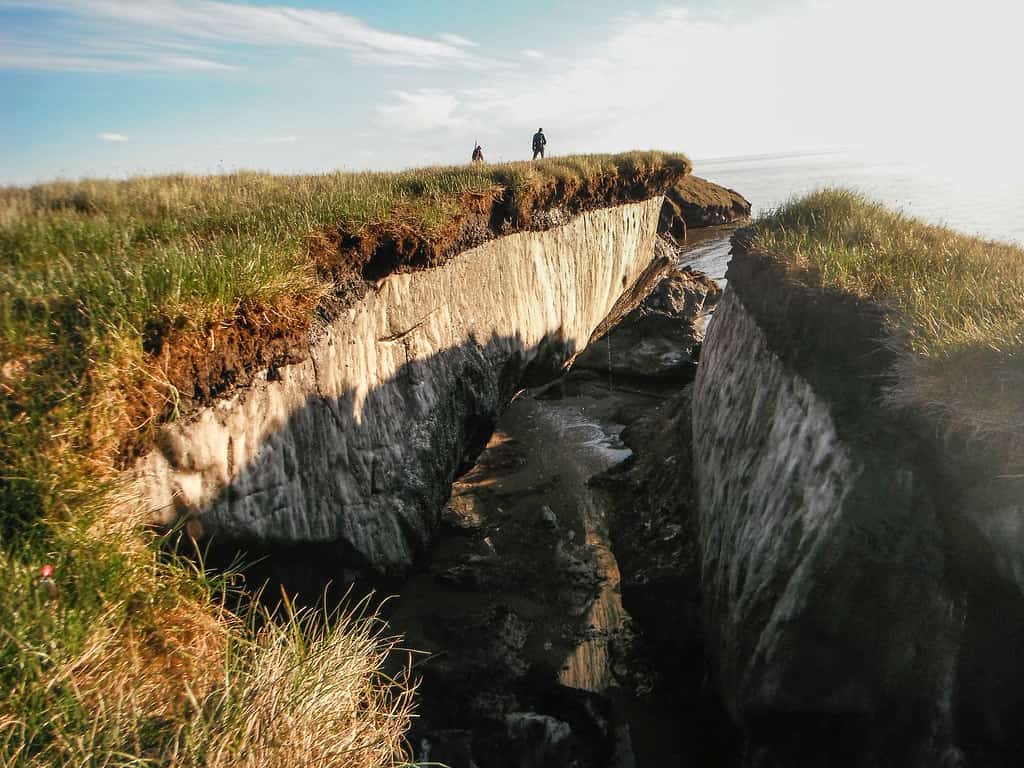
Reviving ancient viruses sounds like a bad, bad idea. But that’s happening anyway — not necessarily because researchers are reviving them in a lab (though that is the case here), but because the permafrost is melting.
A quarter of the Northern hemisphere is underlain by permanently frozen ground, referred to as permafrost, the researchers write in the new study. Permafrost is essentially frozen ground that remains frozen for more than two years. It contains a variety of materials, including soil, rock, and sediment, as well as large amounts of ice. It also contains organic matter, much of which has been frozen for thousands of years.
Permafrost is important for the planet’s climate because if it heats up, much of it will decompose to carbon dioxide and methane, which will further enhance the greenhouse effect. But there’s another problem: this organic matter also contains viruses that could “wake up”.
“While the literature abounds on descriptions of the rich and diverse prokaryotic microbiomes found in permafrost, no additional report about ‘live’ viruses have been published since the two original studies describing pithovirus (in 2014) and mollivirus (in 2015). This wrongly suggests that such occurrences are rare and that ‘zombie virus’ are not a public health threat,” write the authors of the new study.
Jean-Michel Claverie, an Emeritus professor of medicine and genomics at the Aix-Marseille University School of Medicine in Marseille, France and the corresponding author of the study, believes we should pay more attention to these viruses. Claverie is in search of “zombie viruses” that can be resurrected — not just for the sake of it, but for the sake of understanding what threats could loom in the permafrost.
“To restore an appreciation closer to reality, we report the preliminary characterizations of 13 new viruses isolated from seven different ancient Siberian permafrost samples,” the researchers continue.
The viruses belong to five different groups that were not previously revived from permafrost; in fact, the viruses include a new strain previously unknown to science.
Claverie, in particular, focuses on big viruses. We’ve discussed his work several times in the past, including work on the biggest virus ever found. In 2014, he was successful in reviving a virus, and ever since, he has finessed this necromantic craft.
The principle is simple in essence, and doesn’t involve any actual necromancy — you thaw viruses and see if they’re still active and infectious. The practicalities are a bit more complex, but if the virus is still infectious, it’s considered “revived.”
The oldest of the new batch of viruses was over 48,000 years old, while the ‘youngest’ was 27,000 years old. Even after all this time, they were still able to infect amoebas.
This is all very concerning. How many viruses there are in the permafrost, and how many remain infectious after all this time, is extremely difficult to estimate. Similarly, it’s difficult to know how much risk there is to humans or other animals — but this is not something we should dismiss lightly. The prospect of ancient viruses coming back with a vengeance seems like science fiction, but it’s something that we could have to deal with, especially with climate change.
Claverie is concerned that people will treat his team’s work as a curiosity, but he hopes that people will treat it like a potential health hazard. These amoeba-infecting viruses can be surrogates for all other possible viruses that might be in the permafrost. The risk is bound to increase in the context of global warming, the researchers conclude. With permafrost thawing, more people may move into the Arctic. It’s yet another consequence of climate change we have to deal with.


